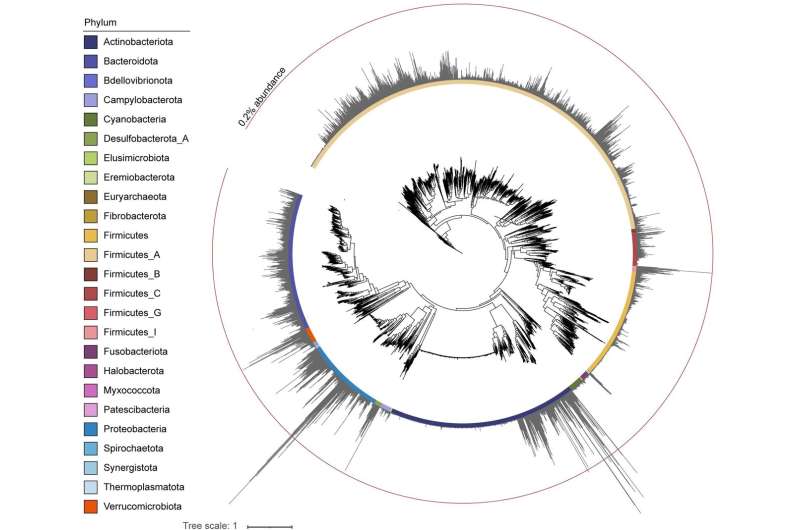This article has been reviewed according to Science X's editorial process and policies. Editors have highlighted the following attributes while ensuring the content's credibility:
fact-checked
peer-reviewed publication
trusted source
proofread
DNA from preserved feces reveals ancient Japanese gut environment

DNA from ancient feces can offer archaeologists new clues about the life and health of Japanese people who lived thousands of years ago, according to a study published in PLOS ONE by Luca Nishimura and Ituro Inoue from the National Institute of Genetics, Japan, Hiroki Oota from The University of Tokyo, Mayumi Ajimoto from Wakasa History Museum, and colleagues.
Fossilized feces, also known as coprolites, can preserve an array of genetic material from the digestive tracts of ancient people. This includes the DNA of the microbes and viruses that lived in their digestive system—all of which could help archaeologists understand more details about their culture and lifestyle.
In this study, researchers analyzed the genetic traces left behind in four coprolites collected at Japan's Torihama shell-mound archaeological site to assess what details of the ancient people's lives could be ascertained from these samples.
The fecal samples were between 5,500 and 7,000 years old, dating back to the island chain's Early Jomon period. The researchers collectively sampled all of the genetic material from the coprolites and compared the DNA they found with known genetic sequences. Within the fecal samples, they found DNA fragments of the viruses that have homology with human betaherpesvirus 5 and human adenovirus F.
DNA breaks down over time, so the genomes represented in the coprolites were often highly fragmented. But despite this degradation, the researchers were still able to assess what kinds of microbes and viruses may have been present in people's digestive systems thousands of years ago.
In addition, the authors suggest that the coprolites' preservation of both viral and bacterial genetic material could help scientists explore how bacteria and the viruses that infect those bacteria have co-evolved over time.
More information: Metagenomic analyses of 7000 to 5500 years old coprolites excavated from the Torihama shell-mound site in the Japanese archipelago, PLoS ONE (2024). DOI: 10.1371/journal.pone.0295924
Journal information: PLoS ONE
Provided by Public Library of Science



















